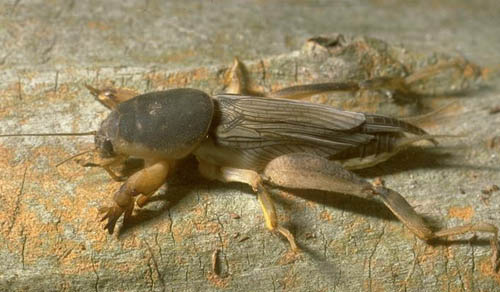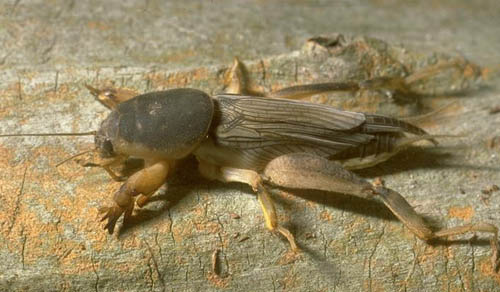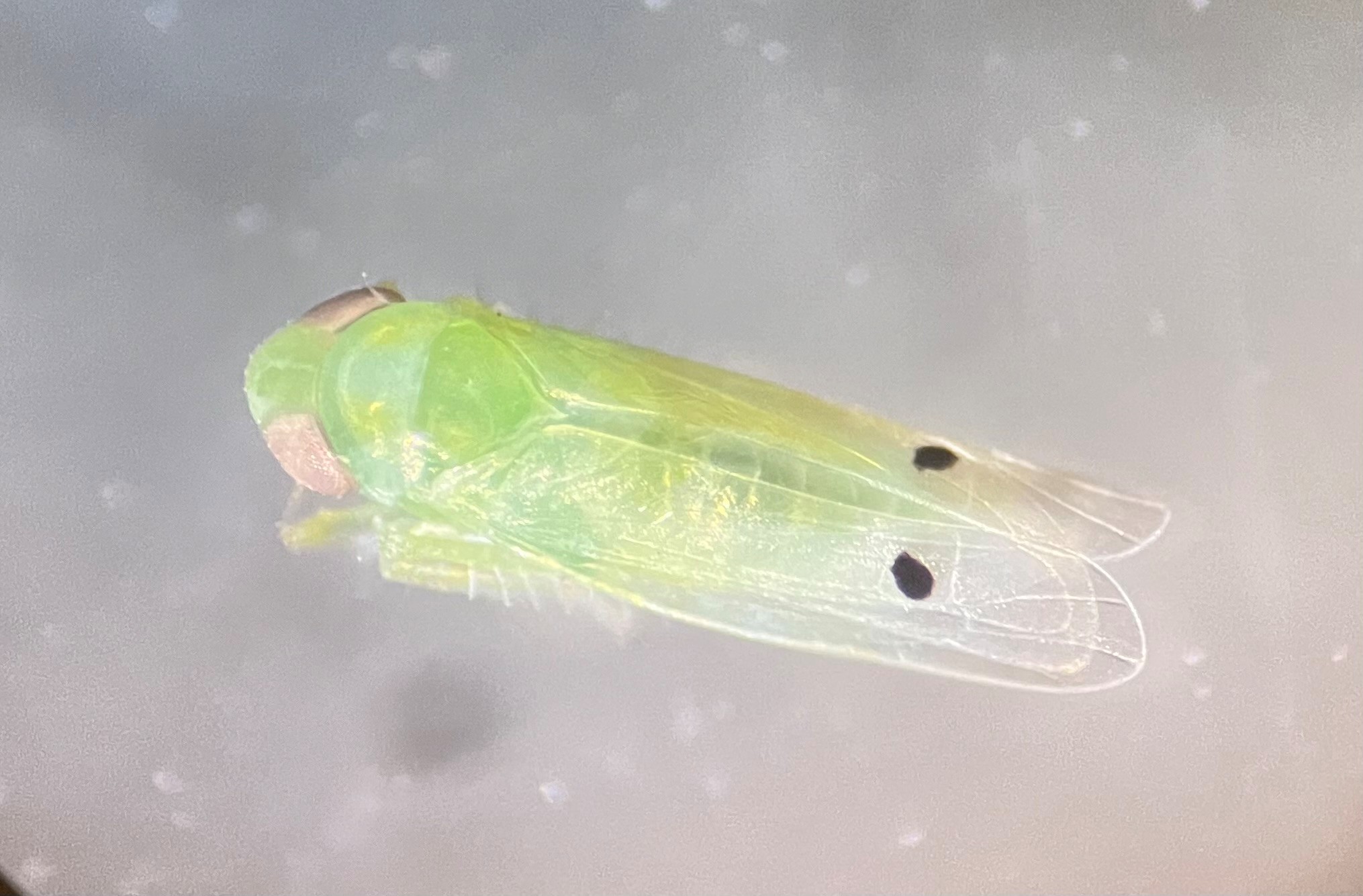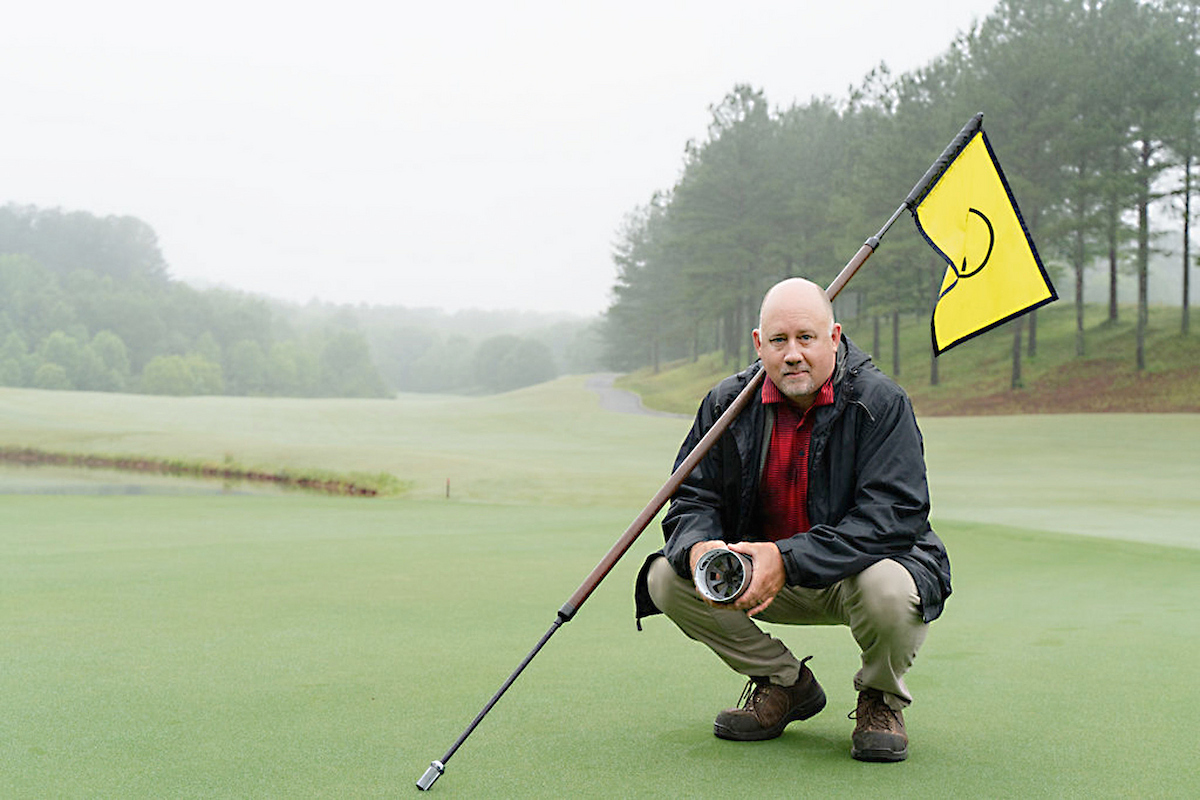Recent rains and warm weather have mole crickets out in full force, wreaking havoc in lawns.
Mole crickets damage turf by feeding on plant roots, stems and leaves. And, they tunnel through the soil. Their feeding is not considered as damaging as their tunneling, however, significant feeding injury does occur in pastures.
Emerge from soil
As temperatures warm, adult mole crickets emerge from the soil and begin to feed and mate. Flights begin in March and continue into May and June. During these periods of mating populations in an area can increase significantly in a very short period of time.
Eggs are laid in clutches of about 40 eggs per clutch and a single female may lay as many as 10 to 12 clutches. The eggs hatch into small nymphs that look much like the adults but are smaller and lack wings. Nymphs grow throughout the summer until fall when they begin to change into adults. Adults can do considerable damage in the spring, but the most serious injury usually occurs late in the season (August-October) when the mole crickets are large and very active.
However, before you invest time and money to treat for this pest, make sure it’s really mole crickets that are causing your lawn problems.
Do this before you treat
Homeowners can test their lawns for mole cricket using dish soap.
Dissolve 2 tablespoons of liquid dishwashing detergent in 2 gallons of water. Pour the solution over an area of approximately 4 square feet. Count the number of mole crickets that emerge (observe area for 4 to 5 minutes). Repeat this in several different locations in your lawn. If an average of 2 or more mole crickets is flushed per site, your lawn needs treatment.
Regardless of the pesticide you chose, some simple steps can help make treatment more effective.
It’s best to apply insecticides as late in the day as possible because mole crickets are most active at night and heat and sunlight affect the effectiveness of pesticides. Also, unless the label instructs otherwise, irrigate thoroughly after application to move the pesticide from the foliage down to the soil surface.
Use water in the fight
You can also use irrigation to manipulate mole crickets and improve your pesticides effectiveness.
Allow the soil to dry out for several days and then irrigate thoroughly in the evening. Apply the insecticide the next afternoon. Mole crickets are sensitive to soil moisture and will move into the ground to find comfortable conditions if the upper soil surface is dry. Irrigation will bring them back up to resume feeding the following night, making them much easier to control.
Timing the application of your mole cricket insecticide can be as important as choosing the right product, and late June is the ideal apply mole cricket insecticides.
The nymph population increases throughout June and almost all eggs that are going to hatch will have done so by July. While time of peak egg hatch varies from year to year, precise timing of control efforts is not necessary. Delaying application until late June ensures that all of the current generation has hatched. Small nymphs spend more time at or near the surface than larger nymphs do and are relatively easy to kill.
Timing is everything
Almost any of the routinely recommended materials will provide good control of young crickets. As summer goes on and the crickets grow, activity and damage increase and the crickets become harder to kill. By late August or early September, control may be difficult to achieve.
For early season (June-July) treatment of most home lawns, many mole cricket control products will do a good job. For late season (August-October) mole cricket control, treat with a bait formulation since mole crickets search actively for food in the late summer and early fall.
Bifenthrin, carbaryl (Sevin 20B) and imidacloprid (Bayer Advanced Lawn Product) are a few of the chemicals that control mole crickets. Always read and follow label recommendations. Visit your local home and garden center to select a mole cricket control pesticide or call a landscape industry professional to make a mole cricket control application.
For more on pests in Georgia turfgrasses, see the University of Georgia turfgrass team website at www.GeorgiaTurf.com.




